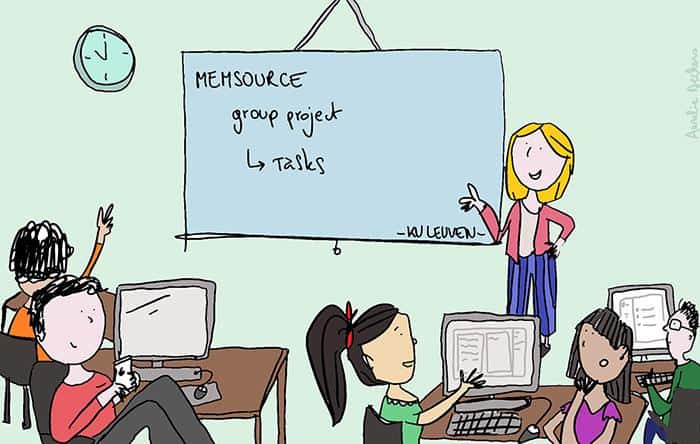
Blog
Machine Translation Report
What is the optimal MT Engine for you? Find out in the latest MT Report by Memsource.

For our CAT Tools course in the Master of Translation (KU Leuven), we were given the opportunity to test Memsource during a simulated translation agency group project. No tutorial was provided by the teacher beforehand as she wanted to see how quickly we were able to learn a new tool on our own. The assumption was that once we have learned to translate with other CAT tools, learning Memsource would be a piece of cake! As such, after a brief introduction to translation workflows, different roles, and tasks involved, we were split into teams and assigned the following roles: terminologist, translator, reviewer, and project manager. Each team had access to the Memsource Academic account and had the following collaborative tools at their disposal: Discussion boards to communicate with the team members, journals to record reflections on our tasks, email, and file exchange.
UI Easy on the Eye
At first, we felt quite overwhelmed by the number of options there are when creating a project. As we got to know what each button does, however, we started to see that all the settings are definitely a great advantage to the workflow. It is only a matter of time before you get the hang of it. The parts we didn’t immediately figure out, we could easily find in the Getting Started guides and related training videos.
The whole group agreed that Memsource is very easy on the eyes. The simple design was seen as a huge advantage, especially in comparison to some other CAT tools, which appear to be more “aggressive”. The fact that Memsource does not work with dialog boxes, but redirects to a new screen is part of their more user-friendly approach.
When creating projects in Memsource, you receive emails notifying you that you have been assigned a job. This is very handy and makes standard communication a lot easier. However, some of us received two identical emails, which made things a little confusing. Soon after, though, we learned there is an option to actually disable these double emails.
What stands out
Broadly speaking, the translation stage in Memsource resembled that of other translation tools, but there were a few things that stood out. Autosuggest was one of them. In a way, it felt like working in Facebook Messenger, which made it much more familiar. Furthermore, adding comments very much resembled the process in Google Docs. These comments are also more pleasant to work within Memsource than other translation tools. The only downside here was that, when performing the QA check, you had to “ignore” the comments before being able to finish our translation. Luckily, this did not mean they disappeared. The reviser could still see them and take the comments into consideration.
Even though your progress is indicated at the bottom of the screen, we missed a percentage indicator. How much of the text has already been translated? How many segments are in draft status? These things might encourage translators when they are working on an assignment.
Another stand-out feature was the translation preview. Some of us liked it in its current form, others would have preferred the preview to be web based instead of being a direct download. Offering both options could satisfy both groups. Adding terms to the term base was also fairly easy. The option of adding notes is great as well, as it allows you to add context where necessary, and it is easily accessible when translating.
Another thing we discovered was the Memsource Editor for Desktop. Not everyone has internet access 100% of the time, so this desktop app is a good way to continue translating and uploading the result when you are done. It’s basically the same translation editor that you can find online, so no need to learn a new system. You can just download the files you need and you’re good to go.
The Mobile App
The digitalization of our world has enabled us to communicate much faster and more efficiently. Memsource takes advantage of this evolution and provides its users access to its services not only via desktop and laptop but also via smartphone and tablet. As a result, the translator is always informed about recent developments in the translation project and is able to respond more quickly to important notifications.
At first glance, the Memsource app offers a smooth interface and appears to be user-friendly. The translator can quickly learn how to work with it and can easily check the current status of translation projects. For translators who prefer to see a preview of their translation, the mobile app provides a function through which the user can consult both the original text and the translated target text.
The app is not only beneficial for translators, but also for project managers. They can start a project within Memsource, create termbases and translation memories. Furthermore, they can assign a job to someone within the project, change the status of the project, and even change the name of the project owner.
The project manager is also always up to date on developments within the translation project. They receive a notification on their smartphone or tablet when the deadline of a certain job within a project has been exceeded or when the deadline of the project itself has been exceeded.
Another thing we found interesting is that all users within a project can switch between user profiles, as these appear to not be linked to one particular role.
In short, the Memsource Mobile app is a great addition for Memsource users and enables them to be even better involved in a translation project. The fact that it is free of charge is also a great advantage.
This article was written by students at the Antwerp Sint-Andries Campus of KU Leuven:



